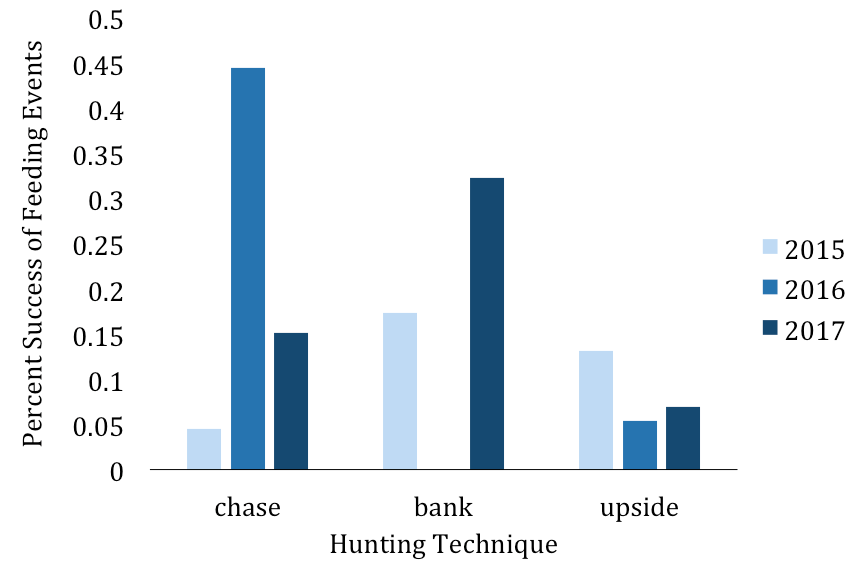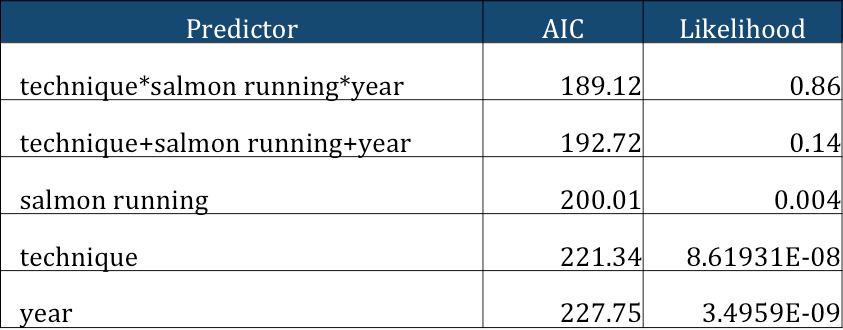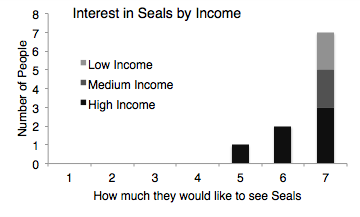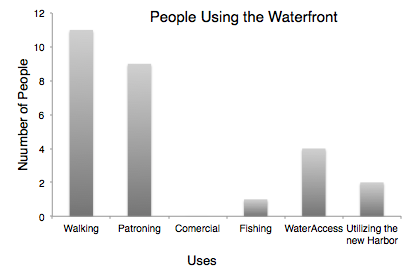June 2018
NWSSMM in Newport
Madelyn Voelker, graduate student
1 June 2018
A few weekends ago myself and two undergraduates from the lab attended the Northwest Student Society of Marine Mammalogists (NWSSMM, phew!) meeting in Newport, OR. NWSSMM is a group of students in the northwest who study marine mammals. It is run for and by students, and every year we meet in early May to tell each other about our research and network with any professionals that attend. This year, Oregon State University hosted the conference at Hatfield marine science center in Newport. It was quite a drive to get down there from Bellingham, but it was well worth it.
The day started off with oral presentations. We got to hear about work on otters, Steller sea lions, and blue whales (among others!). After a break for lunch, a professor at Hatfield marine science center, Dr. Leigh Torres, gave a key note address. She talked about her career as a whole, highlighting some of the neatest things she had discovered, and gave advice on how to be a successful scientist. One of the pieces of advice that really resonated we me was to ask yourself “What would you do if you weren’t afraid?”. This was really powerful to hear from a very successful female scientist. There are a lot of unknowns in my near future, as I am close to earning my degree, and there is a lot of fear associated with deciding my path forward. Taking fear out of the equation allows me to decide what I really want, and sperate that from what I think I can do, and what I think the likelihood of failure is. I think this is needed right now because this is the point in my life to take chances, and really go for the career I want. However, this is easier said than done, so to help remind myself of this concept I have it on a sticky note on my desk that says “What would you do if you weren’t afraid?”. Hopefully that works!
After the inspiring key note address we listened to a couple more student presentations before moving on to the “philosophers café”. This activity was started at the 2017 conference at University of British Columbia. It consists of professionals in the region coming to the conference and sitting down with small groups of students to answer any questions we might have about their research or careers. Every 15 minutes or so the groups switch, so students get a chance to have intimate conversations with a half dozen or so professionals. Not only is this valuable for getting advice on careers, but it is great to get face time with potential future employers. The day finished up with poster presentations, where I presented my work. It was a bit chaotic, but I was able to have meaningful one-on-one conversations about my work with multiple people.
Overall, the conference was a good experience. I learned about a ton of interesting work being done on marine mammals, got some great advice on careers, and gained new perspectives on my research. Hopefully, people will have the same experience next year, because we are hosting! If you want to help out, are interested in attending, or just have an idea for conference activities, let me know! We would love extra hands and minds.
A year of work in a few paragraphs: what have we learned?
MacKenna Nemmarch, undergraduate student
1 June 2018
Hello everyone!
This past month has been quite a whirlwind.
I spent over 80 hours working to finish my research in time for the Student Society for Marine Mammalogy meeting and Scholar’s Week. It was difficult, exhausting, and took a lot of time-management with my academic schedule but I am very happy with the results! Without further adieu, I present to you: Feeding success of harbor seals consuming adult salmon in relation to hunting technique.

Fig. 1 Percent feeding success for all harbor seals at Whatcom Creek according to chase (n=64), bank (n=67), and upside down (n=166) hunting techniques by year.
I ended up only selecting three hunting techniques to study, as they were the most exclusive and easiest to detect with high certainty in photos. The standard deviation of the mean success rates for each behavior is very high (25-40%) meaning the trends across all years are fairly plastic. It is interesting to point out that there was a 0% success rate for the bank technique in 2016 despite 13 attempts and relatively low success for upside down for all years. Something important to consider is that 2017 was an extremely low chum run for the hatchery with 90% less returns. It is possible that this caused bank to be more successful than in past years. With bank having the highest average success rate of all the behaviors, seals may be using this behavior more frequently because it gives them a better chance of feeding when food is scarcer. It may be interesting to see how the bank behavior success fares if salmon runs remain low.
For statistical analysis, I used a generalized linear mixed model. This model can tell us which factors are able to predict feeding success of seals most accurately. I am mostly interested in whether hunting technique is a good predictor for success but many other variables were considered. The lower the AIC value, the better the factors are at predicting success.
Table 1. Generalized linear model examining variables most effective at predicting feeding success. Better predicted models have comparatively lower AIC values. Likelihood describes probability of model being the best of those tested.

The best model for success was the one that accounts for an interactive effect between hunting technique, whether hatchery salmon are running (as opposed to wild salmon), and the year. This means that there was an interaction between the hunting technique used and whether salmon were running, at least among two of the years (2015 and 2017). A high likelihood of 0.86 tells us the interactive predictor is much better than the remaining predictors listed below it.
This is the most exciting aspect of my research as it proves that hunting technique by harbor seals at Whatcom Creek does have an effect on how successful they are! With this new knowledge, I have added a section to our data collection sheet dedicated to hunting technique. When hunting is observed, the data collector must specify which of the five hunting behaviors it is. This will make it easier to extract events associated with hunting as my research on this topic continues.
With a year of research coming to fruition and my experience as an undergraduate ending, it is all too bittersweet. The process of developing my own question, creating a methodology that suited it, and choosing how best to present the discovered information has been invaluable. I am so excited to use these new skills in my career and beyond.
Goodbye one last time!
MacKenna
The trial run and next year
Alisa Aist, undergraduate student
2 June 2018
To start getting data we conducted a trial run in the South Hill neighborhood of Bellingham. There were 11 responses over that one weekend and the results were pretty interesting. Everyone surveyed expressed some level of interest in continuing to see seals in the area (Fig. 1). This is significant as we move forward to know that people are interested in the seals presence, especially given that this neighborhood is very close to the waterfront and will have quick and easy access to the downtown waterfront by walking, biking, or driving.

Fig. 1- Future interest in observing seals in downtown Bellingham across all income groups. A 1 represents that they would not like to see seals, a 7 that they would very much like to see seals. Income brackets: low $0-30,000; middle =$30,000-70,000; high $70,000+.
It was also important to note how people plan on utilizing the new waterfront, with the most important activity being walking (Fig. 2), which may increase human-seal interactions. This predicted increase in seal-human interactions means that the port and the city of Bellingham should consider what form these interactions will take an if they will be beneficial for the seals and the people.

Figure 2: Shows that all people who participated in the survey plan on using the downtown waterfront for at least one use that would increase their interactions with seals.
There were also some questions that were added, such as if the person is a renter or not. The goal behind this question is to further separate those who will likely be in Bellingham when the project is scheduled to be finished. That allows us to determine if the results we get will be relevant to the port and the city of Bellingham for considering how many interactions will occur in the future. It is also important to address how the university population thinks it will utilize that area as Western is growing and students will be a part of the population which has easy access to the downtown waterfront.
As the school year wraps up, there are quite a few changes coming to the lab. Right now there are four undergraduates in the project (Wyatt, Logan, Jenny, and myself) and two more in training for this summer (Max and Helen). Logan is graduating this spring and moving on from WWU and the seal lab. Wyatt will be out of state for most of the summer participating in a REU, Jenny will be spending six weeks in Mexico for a class, and I will be working for the Alaska Department of Fish and Game on Kodiak Island. Summer observations will then fall to Jenny (while she is in Bellingham), and our two newest members Max and Helen. Everyone is trained up and ready count some seals as the project heads into its 9th year and construction on the site continues.